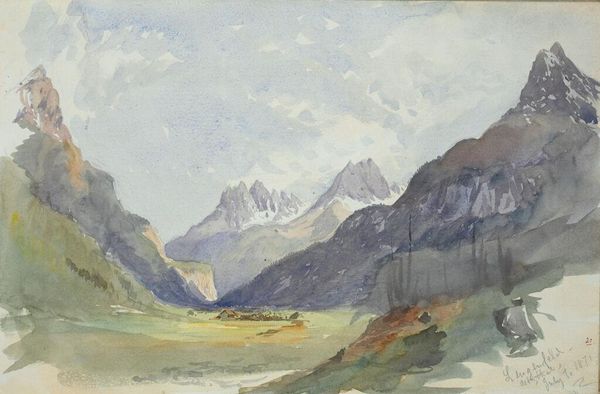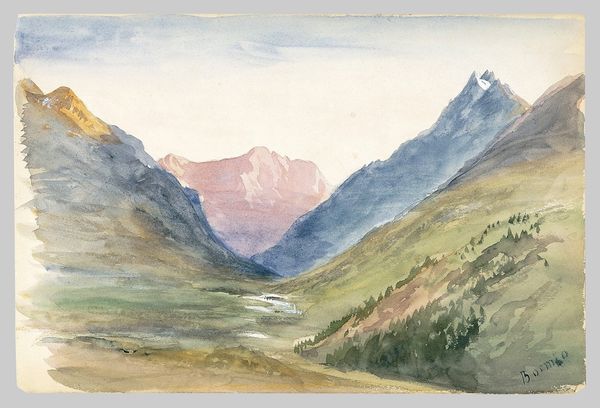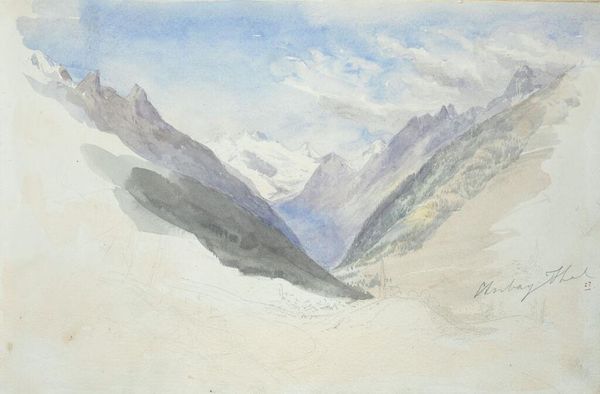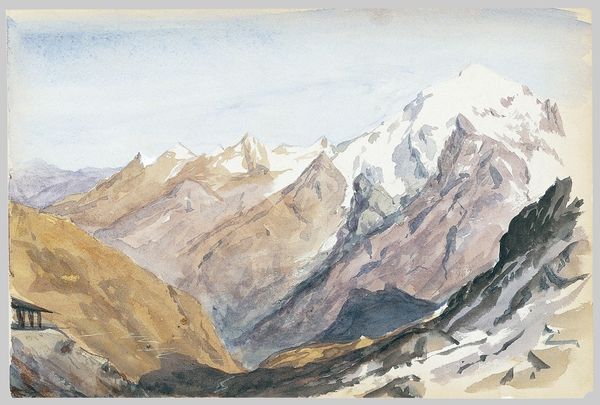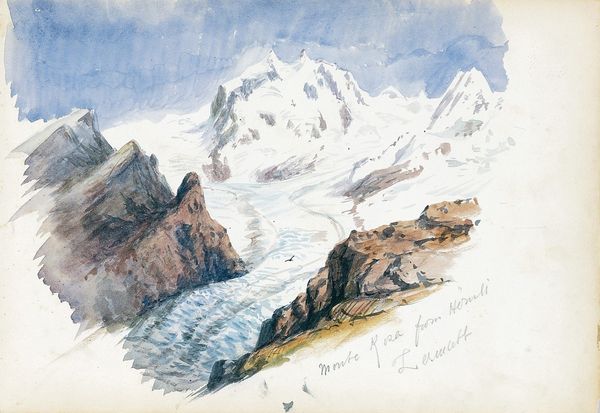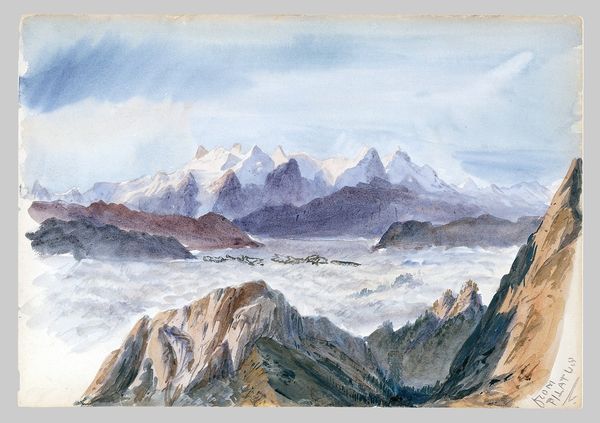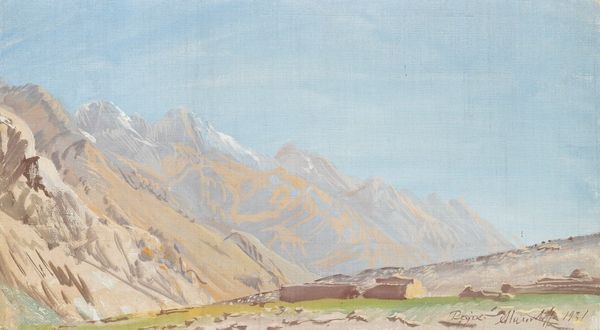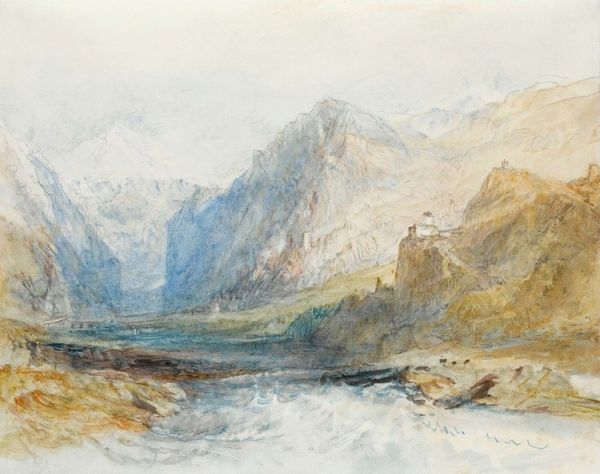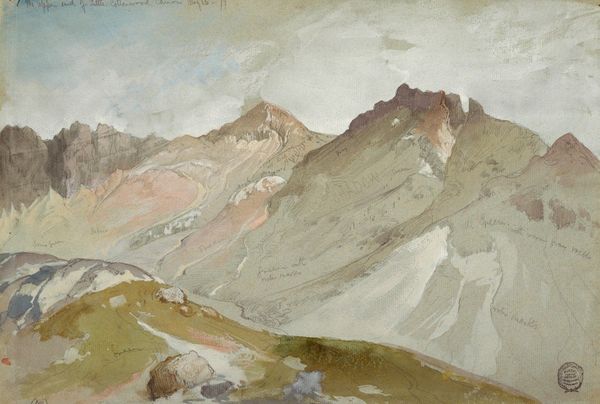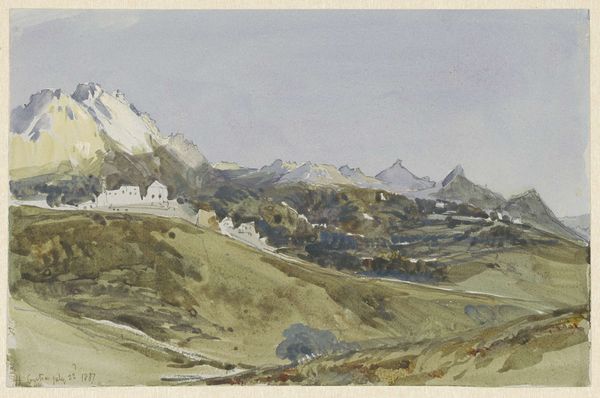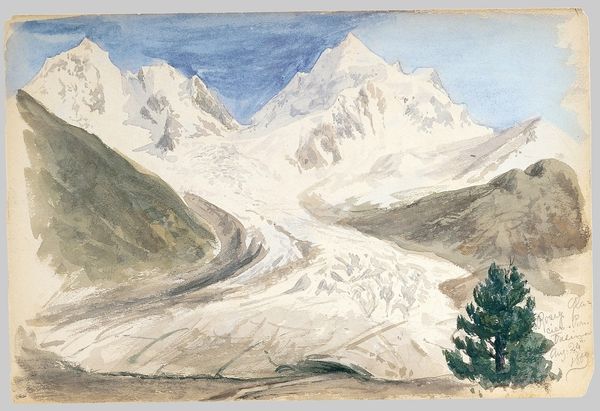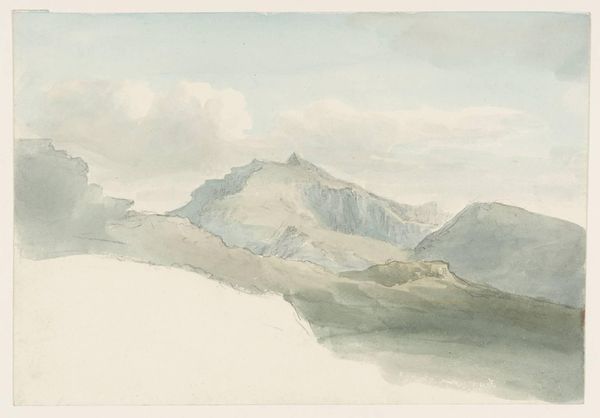
Copyright: Public Domain: Artvee
Editor: This is John Singer Sargent's "Summit of Bernina Pass," a watercolor from 1869. There's a softness and almost melancholy feel to it, even with the grand scale of the mountains. What catches your eye most about this work? Curator: Beyond the technical skill evident in capturing the atmospheric perspective, I think it’s crucial to consider how landscape painting in the 19th century was intrinsically linked to notions of national identity and expansion. These romantic depictions often served to justify territorial claims and obscure the impact of human presence and extraction on these environments. How does Sargent, as an American expatriate painting a European landscape, fit into this paradigm? Editor: That's a perspective I hadn't considered. So, you're suggesting that even in its apparent serenity, a painting like this can be seen as part of a larger narrative of cultural dominance? Curator: Precisely. Sargent wasn’t simply documenting a scene; he was participating in a discourse about ownership, beauty, and perhaps even the "civilizing" influence of European culture. Think about the figures in the foreground. They seem quite small and possibly of lower class, don’t they? Are they subjects in the landscape or subjugated by it? How does their placement impact our understanding of the vista? Editor: I see what you mean. It’s easy to get lost in the pretty colors, but the context gives the artwork so much more depth. Is there also an aspect related to tourism at the time? Curator: Absolutely. These kinds of landscapes often fueled tourism and romantic ideas of the sublime, yet the actual labor and local communities supporting those industries often remain invisible in the image itself. It’s worth examining who benefits from these romanticized landscapes, and at whose expense. Editor: It’s really made me think about landscape painting in a new way - beyond just aesthetic beauty. Thanks for broadening my view. Curator: And thank you for prompting such insightful questions. It is crucial to engage with these landscapes critically, acknowledging their beauty but also interrogating the power dynamics embedded within them.
Comments
No comments
Be the first to comment and join the conversation on the ultimate creative platform.

